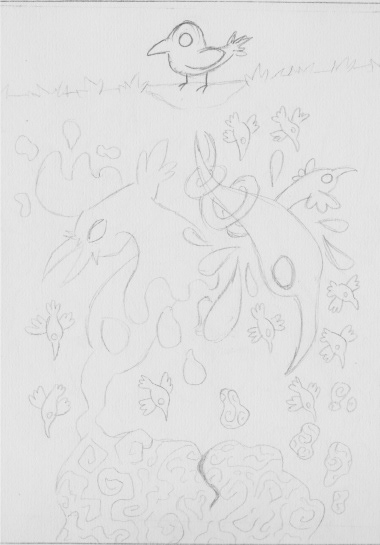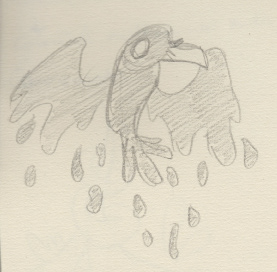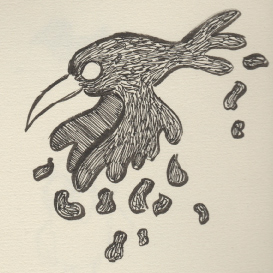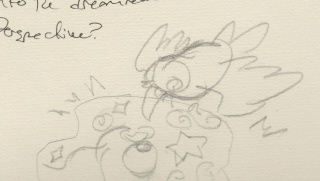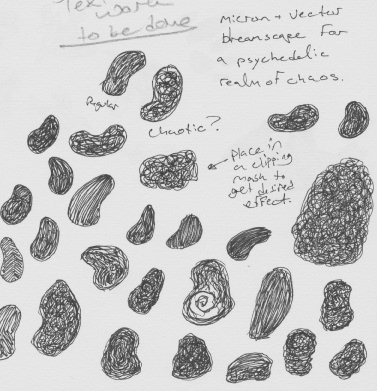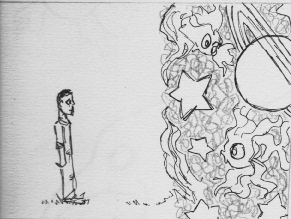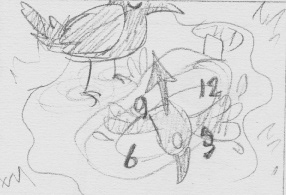All the World We Cannot See is inspired by a passage in the novel Life After God by Douglas Coupland. In said passage, the narrator contemplates the existance of a dream world beneath our own, waking world. Using the symbolism of a crow standing in a puddle from the novel, this illustration took form.
Extrapolating on the idea of a dream world, the crows took bizarre, near nightmarish shapes in the unreal realm below. Since dreams originate in the mind, a human brain births these chaotic corvids. Photo-manipulation provides the texure for these bizarre birds, as despite the creativity and odd nature of dreams, they are still referential to the reality above.
The realm of dreams is an ambiguous thing, which led me to draw from numerous sources to try to visual represent such an unusual concept. The initial idea of a puddle serving as the barrier between the real and unreal realms remained essential to the final composition, but transformed as the piece took form. At one point, the puddle served as a window, rather than a barrier, allowing for the real-world crow to view an eldritch crow below. Since the desire is to present an entire psychedelic realm below, a simple snapshot from such a window was deemed unfit. Dalí-esque and surrealist elements soon took place, as crows flew through melting clocks, brains liquefied into blobs, which in turn stretched into the nigh-demonic birds that inhabit the dreamscape below. Psychedelic colors of the 1970s emerged, solidifying the fact that the realm below is in fact a dream, or at least a hallucination.
At first glance, there is one crow on the surface, a singular figure to oppose the nine birds below, but a flock flies in the realm of the waking as well. Such juxtaposition is intentional, to ensure the balance between waking and dreaming, so neither has power over the other, metaphysically speaking.
